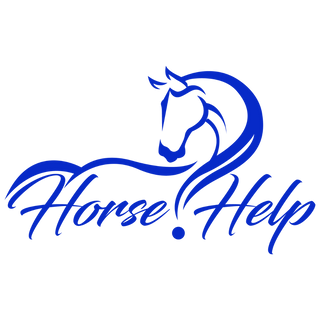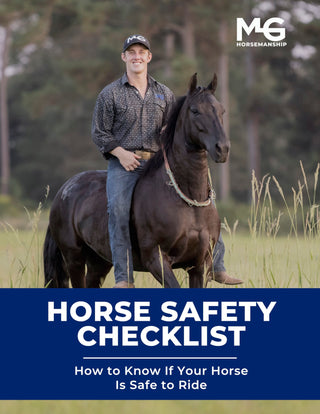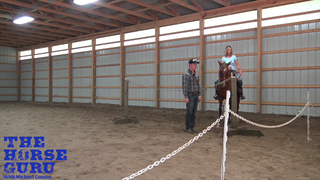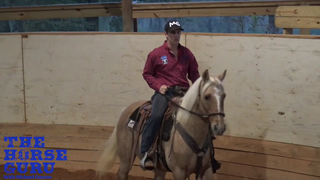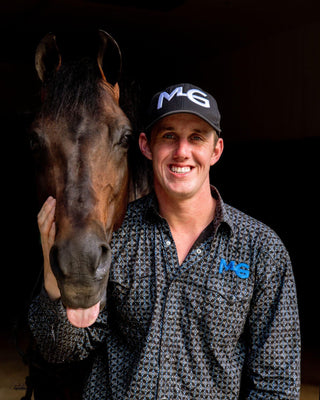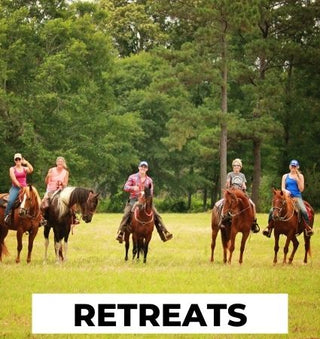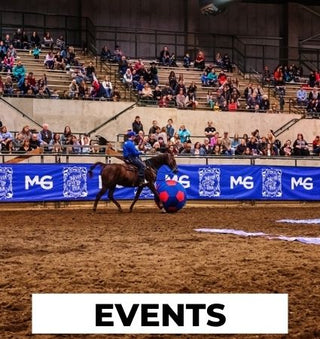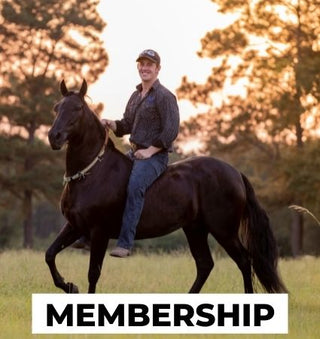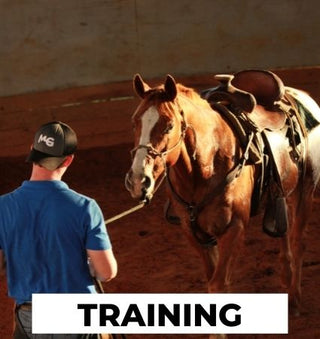Watch the Video Here or continue reading below!
When working with a resistant horse, especially one that has developed habits such as bucking, rearing, or evading control, it can feel like an uphill battle. However, with a systematic approach and persistence, you can transform even the most challenging horses into soft and responsive partners. Let’s dive into how to break through resistance and build trust and compliance in your horse.
Understanding Resistance in Horses
Resistance often starts in the head—the horse’s refusal to yield or respond to cues. This resistance can manifest in dangerous behaviors like bucking or refusing to move. For horses that have "ejected" riders in the past, the issue is usually rooted in a lack of consistent training and clear communication. The key is repetition and a methodical approach to breaking down the resistance.
Essential Tools for Training
While the type of tack isn’t the most critical factor, using appropriate equipment like a snaffle bit, halter, or curb bit can aid your training. The focus should remain on your method, not the tools. For this training session, I worked with a snaffle bit with shanks, but the same principles apply regardless of your gear.
Step 1: Flexing Side to Side
Why It Matters: A horse’s strength lies in its ability to resist with its head centered and elevated. By teaching them to flex left and right, you reduce their ability to use this strength against you.
How to Do It:
-
Start on one side. Slide your inside hand down the rein and gently pull until the horse’s nose comes off-center.
-
Release the rein as soon as they yield.
-
Repeat this process until the horse becomes soft and responsive.
Pro Tip: Perform enough repetitions until the horse no longer resists. The goal is for the horse to instinctively follow the rein without hesitation.
Step 2: Two-Handed Flexion
Why It Matters: Flexion with two hands transitions your horse from basic responsiveness to advanced softness and collection.
How to Do It:
-
Use both hands to guide the horse’s nose downward and inward.
-
Look for signs of softness, such as the horse keeping its head low and relaxed.
-
Consistently reward even small progress by releasing the reins when they yield.
Step 3: Disengaging the Hindquarters
Why It Matters: Disengaging the hindquarters shifts the horse’s balance and discourages behaviors like bucking or bolting.
How to Do It:
-
Slide your hand down one rein and apply gentle pressure.
-
Turn your body towards the horse’s hindquarters, asking it to step under and move.
-
Reward the movement by releasing pressure immediately.
Step 4: Backing Up Crooked
Why It Matters: Backing up crooked is a highly effective exercise for gaining control, as it forces the horse to focus on the rider’s cues and discourages resistance.
How to Do It:
-
Lock one hand against the saddle to stabilize the rein.
-
Use the opposite rein to guide the horse’s head slightly off-center while backing up.
-
Alternate sides, ensuring the horse stays responsive throughout the exercise.
Step 5: Increasing Speed
Why It Matters: Once the horse is soft and responsive at a walk, it’s time to increase the difficulty by asking for the same softness at a trot or canter.
How to Do It:
-
Ask the horse to move into a trot.
-
Repeat the same flexing and disengaging exercises as before, but now at a higher speed.
-
Focus on eliminating any heaviness in the reins by encouraging the horse to yield with light cues.
Keys to Success
-
Repetition: Do each exercise until the horse is no longer resistant. If they’re "sticky" on one side, keep working until that stickiness disappears.
-
Persistence, Not Power: Avoid using brute force. Instead, rely on consistent, clear cues to encourage compliance.
-
Stay Calm: Your demeanor sets the tone for the session. Calmly and quietly working through each exercise builds trust and understanding.
Final Thoughts
Breaking through resistance in a horse requires patience, consistency, and a clear plan. By mastering these techniques, you can turn even the most resistant horse into a willing partner. Remember, control the head, and you control the horse. Practice these steps, and let us know how it goes—share your experiences in the comments or message us directly!
With these tools and a persistent mindset, you’ll enjoy a safer, more enjoyable riding experience. Happy training!
Get 30-day horse training for FREE—join the Horse Help Challenge now HERE!
